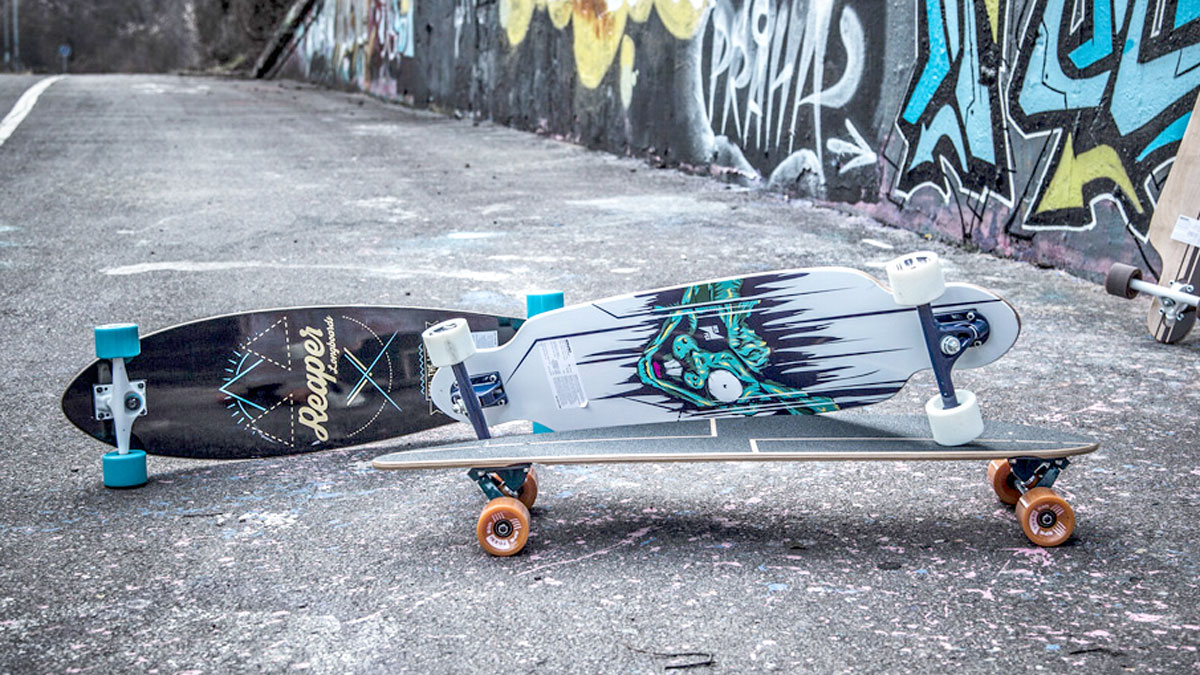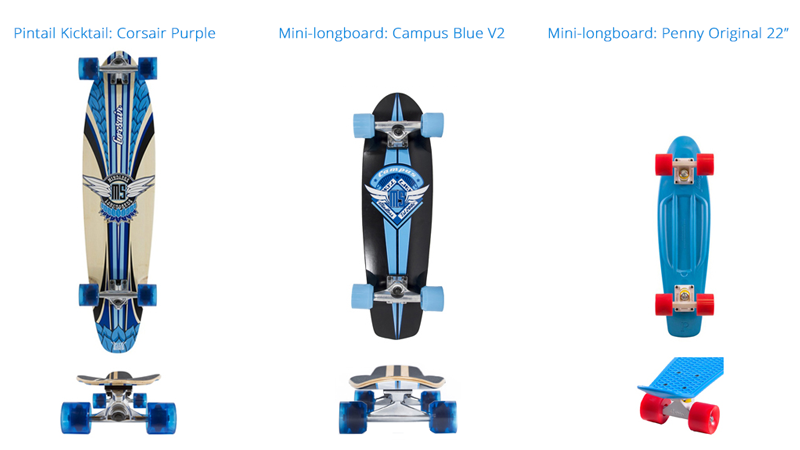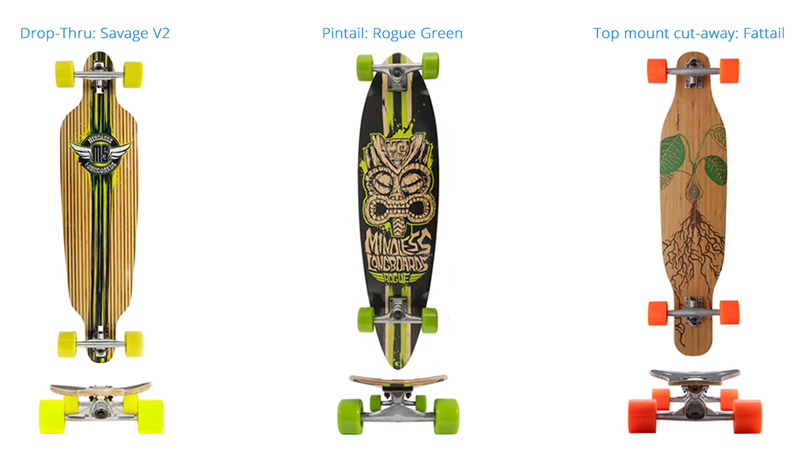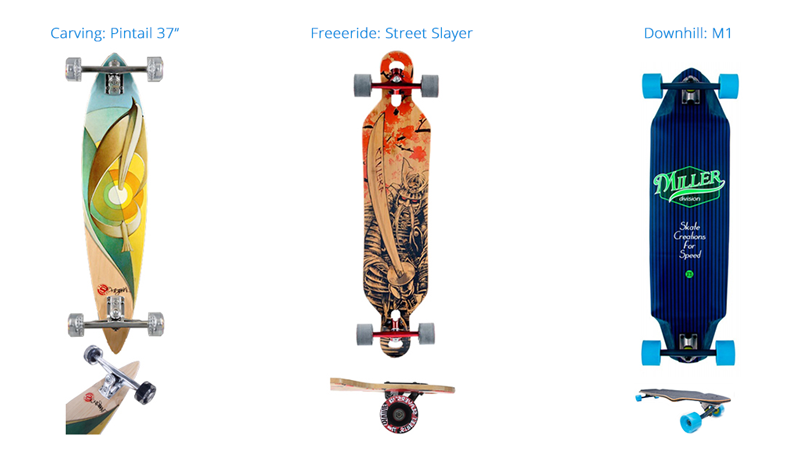Longboards
Choosing a Longboard
Longboard selection is very wide, every one of them has a different shape, used materials, wheels and trucks. The choice can seem complex but with our guidelines you will realise it is simple and you will be able to choose a longboard that suits you the best.
We will describe all components and their features and importance for choosing a longboard. To make it simpler, we prepared a simple process to choose the right one.
The main question is – where will you ride the longboard?

City
If mostly around the city and you will use the longboard as a means of transport, we recommend getting shorter to medium long longboard or a mini-longboard (cruiser) or a Penny skateboard with soft wheels.
Furthermore, we recommend choosing a longboard that has a lifted rear end, so called “tail”. Thanks to the raised tail, which is called “kicktail”, you can lift the front wheels during the ride to get over uneven surfaces or obstacles. On the picture, you can see different longboard shapes which you can choose from.

City, parks, tracks
If mostly in city, but you will ride it mostly in city parks, skating trails and similar, we recommend choosing from classic pintail longboards (pintail is a fish / oblong drops shaped board) or DT / drop thru longboards (DT = trucks attached on the top of the desk = more stable).
We don’t recommend getting very long boards (over 105 cm) and boards made for downhill (higly profiled desks with low height), which you will not use a lot around the town or in the park. On the picture, you can see different longboard shapes which you can choose from. On the bottom of the picture, you can see the front view of the longboard, where the height is visible.
The higher the longboard, the faster it reacts and turns, but it is less stable. Low longboards are more stable even in high speed, but they are not so agile like their higher colleagues. Longboard with orange wheels presents a combination between DT and pingtail longboard, it has slots that prevent wheels from coming in the contact with the board in sharp turns.

Hills and roads
If you will use the longboard mostly outside of the city, you can choose from practically all longboards with emphasis on the style of riding. Given that, we can divide them into basic categories: carving, freeride and downhill.
The carving category includes longboards for going downhill where you can enjoy the carving. Furthermore, the board is suitable for so called “dancing”. Freeride longboards are suitable for downhill riding and sliding. Thanks to truck attachment, DT longboards have low profile and they are more stable in high speed. With the right wheels with round edges and greater hardness that can be easily pushed during the ride.
Downhill longboards are boards for riding downhill from very steep hills in high speed. They feature profiled boards with a low-set centre of gravity, boards are very thick and stiff.

Choosing a Deck
The main component of a longboard is always the desk. Its shape, length and construction determine the suitable style of riding. If you’re buying your first longboard, the desk should be as universal as possible (pintail), until you understand what you really want and then you can adjust the longboard as you wish.
1) Shape:
There are 4 basic desk shapes. Every shape has its pros and cons, which depend on technical treatment of the desk and the riding style of the rider.
2) Length
Another important characteristic of the longboard is the length of the desk. Precisely the length determines the style suitable for the longboard. The following chart shows longboard lengths and styles of riding.
| Deck length | Use |
|
28“ – 38“ (71 cm – 97 cm) |
City |
|
38“ – 42“ (97 cm – 107 cm) |
City, Freeride, Downihill |
|
42“ and more (107 cm and more) |
City, Freeride, Downihill |
Types of longboard shapes:
